 We don’t talk about poop, nor look at it ( maybe a quick glance before it is swished away) , nor do we want to smell it. Yet poop is one of the most important indicators of health! Ever since I have been studying Ayurveda, I check my poop daily. Yes, I have become poop obsessed! If you come to me to see me or any other Ayurvedic Practitioner for that matter, you will get lots of questions about your poop among other things. Your poop is a treasure trove of information ! It can tell you a lot about the quality of your digestive health, your digestive fire (agni), metabolism & if you have ama ( toxic build-up). When your digestive fire (agni) is incorrect, then the food you eat will not be digested properly. The result of this incorrect digestion is the accumulation of gunk called ama ( toxins) in the GI tract . If the digestion is not corrected and the ama continues to accumulate, then it will overflow from its site in the stomach into other parts of the body: a) Flow of ama into the blood vessels & skin can cause eczema, acne, psoriasis and gout; b) Flow of ama in the joints and what is called marmasti , can cause ailments such as arthritis, osteoporosis and enzyme disorders such as infertility, obesity, diabetes and cellulite; c) Flow of ama into the abdominal area can cause ailments such as peptic ulcers, gastritis, abdominal distension, constipation and irritable bowel syndrome (IBS). If the ama is left to continue through the pathways unchecked, then it will eventually saturate the tissues of the body and can lead to serious illnesses like cancer. By doing yoga according to your constitution, eating according to your constitution, using specific spices and herbs you can bring your digestion back to its correct level improving your agni, ,appetite and overall health. Once you k now what to look for, you can tweek your diet & lifestyle accordingly based on your dosha ( your constitution)  How to Be Your Own Poop Detective: Toxic Build-Up Q. So when you poop, does it float or sink? Do you have to use a brush to clean the toilet? A. If it heavy and sinks when you flush , and you’ve got to use the brush, then you have ama. If your poop floats you’ve got fat in it and if it semi-floats and flushes without staining. Hooray! You’ve got the perfect poop! Take The Poop Race Test: To check how long it takes stuff to get from when you eat to when you poop, eat some baked beets on an empty stomach and time how long it takes to come out the other end. Less than 24 hours is what we are looking for. If it takes longer, then things are stagnant and have more time to putrefy and rot in your digestive tract. It might be time to eat more veggies and focus on feeding your healthy bacteria. Check out the chart below. If you have any of the characteristics pertaining to one of the constitutions, you can do a dosha pacifying diet: Other Indicators ( please see a doctor immediately if you have any of the indications below that are anything other than from something you ate or drank) Odor: If it is offensive, there are toxins present. Garlic, onions and eggs may cause an offensive odor due to sulphur content. Musky odor may indicate pancreatitis, Fermented odor due to alcohol or undigested carbs Rancid may be a sign of a peptic ulcer Pungent: due to spicy foods in upper GI tract. Other Color Combinations & Possible Indications Dark: may be from meat, red wine or dark colored foods. Tarry Black: peptic ulcer or upper GI bleeding Brownish: typical mixed diet Green: gallstones Greenish yellow: liver disorders Yellow: undigested fat Red: bleeding due to hemorrhoids, rectal cancer, ulcerative colitis, typhoid fever phosphate poisoning, cirrhosis or may be red due to eating red meat, rhubarb, red cabbage, beets & carrots Clay colored: obstructive jaundice Other Shapes: Pencil shape: may be an indication of rectal cancer Bulky and Large: taking some kind of fiber Ribbon shaped: spastic colitis Check out the perfect poop to strive for in this video of Dr. Oz on Jimmy Kimmel Live: 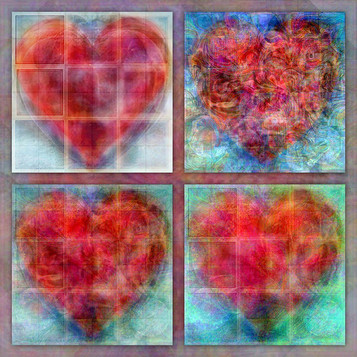 Hypertension is a common disease nowadays, which, if not treated correctly can cause damage to the organs of the body. People who suffer from high blood pressure need to lower their blood pressure in order to neutralize the effects of hypertension on their body. While change in lifestyle and diet is recommended for people who need to lower blood pressure. Yoga has been proven to be very helpful in the treatment of hypertension. Yoga exercises, called asanas, involve stretching and moving the body into various positions. During these exercises any tightness or tension observed in the body should be consciously relaxed. Yoga practice offers stress management techniques, which are essential to lowering blood pressure. There are many yoga asanas, but only certain asanas can help you lower blood pressure. Poses For Lowering Blood Pressure The most efficient for lowering blood pressure are the forward bends. All these asanas lower blood pressure, slow down pulse rate, have a pacifying effect on the brain, the nervous system, the blood circulation to the brain, and they also help you reduce stress. Many hypertensives have difficulties in breathing and sitting asanas help them in this matter and they also lower blood pressure. Upavista Konasana, for example, removes tension from the ribs and the intercostals muscles, and also helps with breathing. Other helpful asanas that lower blood pressure are the supine poses, like Supta Baddhakonasana, which relax the abdominal region and have a calming effect on the nerves. Inversions , such as Halasana and Setubandha Sarvangasana, have a refreshing effect on the nerves and reduce the sympathetic tone very fast. Usual practice of these asanas regularizes blood pressure and lowers blood pressure when it is abnormally high. To all these previous asanas you can add the pranayama and the Shavasana, which relax the mind, the senses, stabilize blood pressure, and lower blood pressure in case of hypertension. 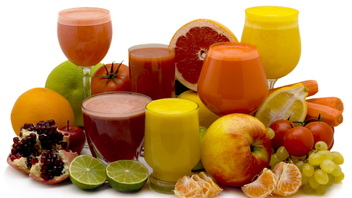 I had this discussion with a friend of mine over dinner early this summer. Recently, Ayurvedic Juicing has become the buzz word and now Dr. Oz recently featured Ayurvedic Juicing and cleansing on his show. While I love the fact that Dr. Oz and others are making the US more aware of Ayurveda, juicing and Ayurveda are so diametrically opposed. It reminds me of a recent self promotion of a celebrity scantily dressed in yoga poses reminding us about yoga being a cure for a hangover! Juicing is NOT Ayurveda just as this promo has nothing to do with Yoga. Someone may argue, “ Come on! We are not living in ancient times!” and the teachings should evolve. OK, I could possibly accept that , but let’s look at juicing from an Ayurvedic perspective: 1) It is not found in any of the ancient Ayurvedic texts including Charaka Samhita. 2) Ayurveda including the Charaka Samhita, recommend a diet of mostly cooked foods as cooking increases the element of fire (agni), which is essential for digestion, the assimilation of nutrients and their transformation into the bodily tissues. 3) While juices may contain organic veggies and fruits, not all veggies and fruits are good for everyone’s constitution. 4) Juices contain little or no fiber, are light and watery ,contain a high amount of sugar ( even if it is a veggie juice) and are generally served cool or cold. For a Vata person the cold, light quality could provoke Vata causing bloating and gas. The cold water and sweet quality would increase Kapha further slowing down metabolism, increasing ama and a Pitta person with a strong digestive fire would not be able to tolerate a juicing fast as it would further aggravate their metabolism. 5) Juicing may seem perfect for the lifestyle of the person on the run and a way to to gulp down the needed nutrients that are lacking in the average American diet, however chewing and mindfulness are important to help kick start poroper digestion. As Mahatma Gandhi once said "Chew your drink and drink your food". When we drink foods without chewing , they enter the digestive system too fast before the body is even aware that it is food and so the digestive process has not even started. Chewing and the formation of a bolus with saliva is the very part of digestion.When we drink something quickly, we do not give our digestive system a chance to get started which can lead to that uncomfortable bloated feeling. Drink your food! With each bite of food we take food should be chewed until it turns to liquid. It helps us be your mindful and brings a more Sattvic quality to our meal and the slower process allows for the correct signalling by the brain and for the correct sequence of events for proper mechanical and chemical digestion to occur. Digestion progresses from the mouth through to the stomach and intestines, where digestive acids and enzymes are sequentially released from different glands and organs. If considering juicing the following should be taken into consideration: the person’s constitution, season, time of day, the health of their digestion; the state of agni, bowel movements and level of ama as well as what fruits and veggies are being included in the juice and why. While it is wonderful to see that Ayurveda is becoming more mainstream in the U.S., I wouldn’t be surprised to see, before long, the word “Ayurveda” being used to market a “healthy” Starbuck’s Chai Latte or Extra Value Meals. 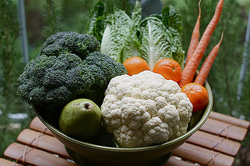 Why do we eat ? On the most basic level, we eat to satiate hunger and get the nutrition we need to sustain our physiology. In the West we talk about recommended daily allowances in terms of caloric intake, minerals and nutrients. Reading nutrition labels is like a chemistry experiment gone awry . On the other hand , the Ayurvedic approach to food is so simple, pure and perfectly harmonious. In Ayurveda ,eating is a purification of the body and like Yoga, it is a communion with the divine. The preparation of food, the offering of food , and the eating of the food that is offered to us is sacred. Food is a gift from Mother Earth and the Divine and it should be eaten as it was gifted to us without being irradiated, bleached, treated with chemicals. If we recognize food as a communion with the divine and as medicinal in nature, it changes our entire attitude of how we eat, when we eat , why we eat and what we eat . And it changes the energetics of the food. In order to understand the energetics of food, we must first understand the gunas. The Gunas The three Gunas as described in Yoga & Ayruveda are Sattva, Rajas and Tamas. The gunas can be described as the qualities of energy in all things and describe the "tendencies" of the mind, body and consciousness and describe our behavior, thinking, health and diet as well. Rajas is characterized by excitement, desire activity, restlessness, stress and anger. Tamas is characterized by lethargy, dullness and laziness. Sattva is characterized by balance happiness, contentment, virtue, patience & forgiveness There is an interplay of all gunas within us. Without Tamas we would not sleep and without Rajas we would lack the drive to get things accomplished and without Sattva life would be uninspiring and without the higher human qualities. Yogis aim to increase sattva guna through a healthy body and a peaceful mind and diet plays a major role in creating harmony.  "One man's food is another man's poison": We can eat the most beautiful, nutritious organic food , but if it is not right for our dosha it can cause an imbalance and how we cook, eat and store our foods can affect the gunas of the food and our consciousness. We can be more or less dominated by one of the three gunas and depending on what kind of energy we need more of in our lives we can regulate these gunas in body and mind through ayurvedic cooking. If we eat or cook when angry, depressed, bored, or feeling emotionally unstable, or immediately after any physical exertion that energy will infuse the food. It is best not to eat or cook in this state of mind as it can give a rajasic or tamasic quality to the food. In general, it is best to cook for yourself or let only someone who loves you cook for you. With that being said, it is best to avoid eating out too much. Restaurants are in the business of making profits and not balancing your gunas. You do not know how the food was prepared nor what energy from the cook or server is pervading the food. Sitting while eating in a clean area, facing the direction of the sun, the earth's source of heat and fire, engaging in pleasant conversation or eating in silence allows us to digest our food well rather than watching t.v., talking about politics or eating on the run or in the car. Eating alone or with people with good energy and engaging all the sense organs while eating or cooking colorful foods with pleasant music, fresh flowers has a sattvic quality. Overeating is tamasic. How much is the right amount? In Ayurveda we divide the stomach into 3 parts : 1/3 is for food, 1/3 for liquid and 1/3 for air. The quantity of food is 1 Anjali which would equate to placing your hands in prayer and opening them up. So whatever fits into the palms of your two hands is how much we should eat. The liquid should be warm water as it aids with digestion (ice drinks and cold drinks put out your digestive fires) and the last space remains empty so that your stomach can churn. 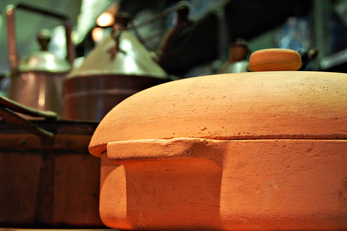 Cooking with a gas flame is most sattvic , pervading the food with a quality of Agni that is not there when cooked on an electric stove . While cooking on a gas stove is the best option, it may not always be possible and to save time and not cook in a hurry and infuse your meal with nervous energy, we can use a crockpot and rice cooker. Food that is cooked with love and care has a sattvic quality even if the ingredients or the cookware may not be as sattvic. When we do use this type of cookware, we can infuse the food with loving energy as we prepare it, increasing the prana of the food. Microwave cooking is void of agni, lacking prana as it scrambles the chemistry of the food and therefore is considered tamasic. Food cooked with cookware or utensils of unnatural qualities make foods tamasic because things like non-stick pots/pans or plastic utensils seep toxins into our food without us even realizing it. “Non-stick” cookware is a MAJOR source of PFC’s, particularly perfluororooctanoic acid, known as PFOA Three to five minutes after heating a non-stick pot or pan at least six toxic gases are released into the air and in the food. These chemicals are easily absorbed by the body and the food in the pan, turning that healthy organic home-cooked meal toxic. PFC’s have been linked to a range of health dangers: elevated LDL, infertility, birth defects thyroid disease immunosuppression and cancer. Certain metal cookware can leach tamasic toxins into food. Cooking in aluminum cookware produces hydroxide poison which neutralizes digestive juices, producing stomach and gastrointestinal trouble, such as stomach ulcers and colitis Stainless steels which is a widely used material in food preparation and in home cookware when it reacts to organic acids and salts in foods , allows chrome and nickel to bleed into the foods If one is going to use stainless steel cookware, it should only be high -grade surgical stainless steel. Nickel has been implicated in numerous health problems, notably allergic contact dermatitis. While women do not typically need to worry about iron leaching from cast –iron cookware as long as they are still menstruating and losing blood, and growing children require more blood and more iron, cast iron cookware can cause iron overload in adult males and menopausal women. So the best thing is to think nature! To increase the sattvic quality of food, cook with cookware and utensils that are closest to nature : ceramic, clay, and wood utensils. Ceramic cookware is made of an earth mixture which is fired to create ceramic and clay is of the earth. In the age of "convenience" instant foods that are eaten on the run, we have given up on our health for the sake of time and convenience. Making wholesome nutritious meals and tapping into the energetics of food can be done without taking too much time out of the day and without a strain on the wallet. Ultimately if we change our vision of food from one that is just fuel to realizing that food is divine, it will have a huge impact. While there are many paths of yoga, a yogic life that leads to transformation includes making choices that honor ourselves, family, humanity, all living things and the planet; by eating ethically, seasonally, and gratefully. Ayurveda, the sister science of Yoga is all about balance: physical, emotional, mental and spiritual . Food according to Ayurveda is both medicine and is divine. Our greatest wealth is health and the how, the what, the where, the when and the why of our food choices can have a huge impact on our physical and mental health, the health of our families and our planet. 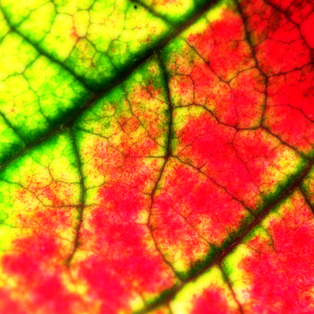 Guidelines for Vata Season Many of us associate seasons with specific types of food, yet we are generally still largely unaware of how biological rhythms cause changes in appetite. We generally consume less food in the spring and summer and in the fall more carbohydrates and more protein in winter. One of the principles of healthy eating is keeping in harmony with the natural cycles and our own physiological cycles thus improving the internal flow of energy and balancing the functional activity of our organs. If we take in foods that do not take into account seasonal rhythms, this saps our energy and causes imbalances that can lead to disease. Ayurveda defines foods and lifestyle not only according to the psychophysical constitution or dosha of each person, but also according to the relationship between our personal constitution and seasonal changes. Vata season generally begins late September in autumn, unless you live in Texas where it is still in the 90’s! It is a time when the Air element (Vayu) is predominant. There is a greater lightness, cool, dry and fresh quality in the air. There is also a tendency for winds to blow in changing directions. In Ayurveda we say that like increases like, so aggravated doshas are pacified by a diet and lifestyle that is opposite in nature to the prevailing conditions .The seasonal tendencies of autumn aggravate Vata Dosha, but also let us not forget that we have all 3 doshas: Vata, Pitta and Kapha and Vata dosha may get aggravated in each and everyone of us. Vata is characterized by qualities of light, dry, mobile, cold, hard, rough, sharp, subtle, flowing and clear. Vata rules the nervous system, controls the moisture levels in the body, the feeling of relaxation and how we digest food. Autumn is a time for balancing Vata, by maintaining a regular routine and a Vata pacifying diet to avoid increased Vata imbalances such as restlessness, insomnia, constipation, dry skin, and worry. Balancing Vata during the autumn season also allows us to build a strong natural immunity against the cold and flu that tends to strike during the winter . Dietary Guidelines: Think about the Vata qualities of light, dry, mobile, cold, hard, rough, sharp, subtle, flowing and clear. Include foods of the opposite quality and avoid foods with the same quality. The most important principle to remember about food during Vata season is to have hot cooked food. Since Vata is cold, dry and rough, hot cooked food made with a little olive oil or ghee is soothing and calms down restless Vata immediately. Also hot beverages like herbal teas or hot milk have an immediate effect of balancing Vata. Cold sandwiches, cold salads, dry cereal with cold milk are the types of foods that can create a Vata imbalance and should preferably be avoided during this season. Foods to include in Vata season: Foods with sweet, sour and salty tastes . Grains: basmati rice,oats, quinoa , wheat products such as bulgur,couscous, pasta, cream of wheat. Dairy: warm milk, buttermilk cottage cheese, lassi, Oils: olive, sesame ,ghee & butter Sweeteners: raw honey, molasses, turbinado sugar, date sugar Sweet juicy fruits Nuts in moderation such as cashews, almonds and pistachios are good for Vata. Sesame seeds are especially balancing for Vata. Foods to avoid : dry cereal, granola, bread, cold foods, ice cream, barley, corn, buckwheat, rye, dried fruit (raisins & prunes should be soaked in water first, dates are fine.). Acidic fruits like blueberries. Apples and pears are good when cooked. Salads and raw vegetables, beans , broccoli, cabbage, in general should be avoided except mung dahl, tofu and green beans. Daily Routine for Vata Season: Get up early and brush your teeth. Take a tablespoon of sesame oil and swish it in your mouth for 3 minutes. This nourishes the mouth, strengthens the teeth and prevents bleeding gums. Drink a glass of room temperature water which helps to cleanse the GI track, flush the kidneys, and stimulates peristalsis. It is not a good idea to start the day with tea or coffee, as this drains kidney energy, stresses the adrenals, causes constipation, and is habit-forming. Give yourself a self-massage ( abhyangha) with warm sesame or coconut oil. This counteracts the seasonal tendency towards dryness, joint pain and muscle aches. Then shower with warm water. Use some essential oils that are grounding such as vetiver, orange or geranium essential oils . You may also add a few drops of these essential oils to your self-massage oils or use while taking a bath. For breakfast have a bowl of oatmeal or cream of wheat to which you can add cinnamon & hot milk or a date and almond shake, made from soaked dates, soaked and peeled almonds, and boiled milk (or a substitute) – blended together with warming spices like cinnamon and nutmeg. Ideally lunch should be the main meal of the day. Opt for hearty grains, steamed or sautéed vegetables, (unleavened) breads, soups and stews are excellent choices for lunch. Avoid raw salads, soft drinks, cold drinks, ice, peas, yeast and fermented foods and because they cause gas and can disrupt digestion. Snacks: include an herbal tea ,unleavened wheat bread ,dates, or fresh fruit or hot milk with almonds .Coffee and other caffeinated beverages can aggravate Vata and should be avoided. Dinner : ideally it is a bit smaller and lighter than lunch but should provide enough soothing nourishment to pacify vata. Soups, stews, or a smaller serving of lunch are a perfect choice. If you practice yoga, use more grounding poses to mobilize Vata energy in a downward direction. You can also include alternate nose breathing. This breathing practice purifies accumulated toxins due to tension and constriction of channels. Breathing practices help us relax, but also relax the subtle channels which can easily become strained. At the end of the day make yourself a cup of warm milk with a pinch of nutmeg and cardamom or a pinch of ginger and a little sugar or honey for a good night’s sleep . While these general tips can help to start incorporating Ayurveda and feeling better, ideally adjustments should be made if you suffer from any imbalances due to change of seasons and the individual constitution of a person needs to be taken into account as well ; for instance if you have a Pitta imbalance during Vata season, then your diet needs to take into account that imbalance. Consider an Ayurvedic consultation which will help to customize your routine. There are some herbal remedies that are great for reducing Vata, maintaining inner strength and balance and reduce symptoms such as insomnia, difficulty in digestion, constipation and anxiety. Rome was not built in a day, so take one or two things at a time, that you can incorporate into your daily and weekly routine. Namaste, Tamara  Painting by Julian Opie Painting by Julian Opie I don’t know about you, but have you ever left work, had an errand to run and find yourself going in the direction of home instead? This and similar things have happened to me! This is a symptom of disconnect! Most of us live our lives completely disconnected from our body and our true self; running on automatic pilot. Our emotions running in one direction, the body in another and our mind producing endless chatter. We look to the outside world and material things to bring meaning to our lives; our job, parents, religion, friends, social media . When we don’t feel well, we go to the doctor who will give us some pills so that we can keep that train going . Eventually our bodies and mind come to a screeching halt when we develop chronic pain or some other ailment. It is a sign post saying, ”Stop !” When we can connect all areas of our being and get them working in the same direction, we can live more fully and connect with our true purpose. Understanding the relationship between all the dimensions of our being and working daily to get them aligned is the most powerful tools to finding balance in our lives. Like many people in the West, I first came to yoga for the physical practice, however after the very first class, I felt that there was something more, something mysterious that made me feel a deep sense of peace on all levels. I cringe when I hear the expression “on the mat” and “off the mat”, but real yoga is not what happens in that 90 minutes asana class, but how we live our lives. . Asanas, pranayama and meditation teach us to become more aware. The real challenge is, can you take that awareness and bring it into your everyday life. So the question is how to do that? Below is my Rx that has worked for me to stay aligned. First of all, we are not just the physical body. Instead we are multidimensional beings made up of different interactive layers, one within the other much like the petals on a rose bud. Moving from the outer most layer to the inner most spiritual core we have (described by the yogic sages over 3000 years ago in the Upnaishads ) what are called the 5 Koshas: annamayakosha—the physical body; pranamayakosha—the breath or life-force body; manomayakosha—the mental body; vijanamayakosha—the wisdom body; and anandamayakosha—the bliss body. 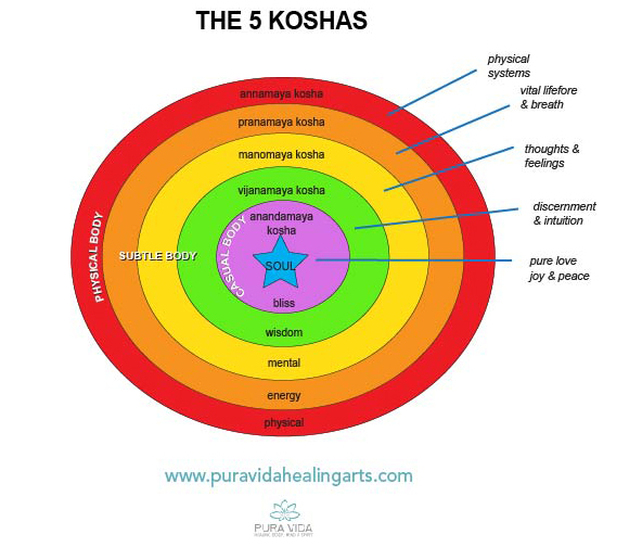 Annamayakosha- the physical body also known as the "gross" body (sthula-sarira). When I teach an asana class, we start with becoming aware of our physical body, our presence, our feet connecting with the earth, our senses and sounds coming into our awareness, smells and sensations in each and every part of the body. We can take that out into our everyday lives by bringing awareness to everything we do. One of my favorite quotes from Thích Nhất Hạn is “Walk as if you are kissing the Earth with your feet.” Let this quote guide you through all that you do in your daily lives on a physical level bringing awareness to all your actions at the physical level. Think of the body as a temple. It is that sacred space wherein lies our being. “Ana” in annamaykosha means “food” and we should nurture our body with wholesome foods which brings me to the next kosha: 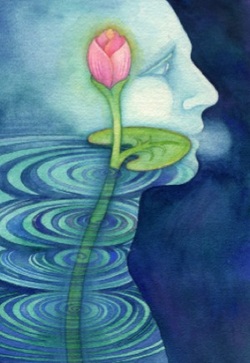 David Heskin: Breathe David Heskin: Breathe Pranamayakosha: Prana means energy. It is our vital life force, that nectar found in all living things. Without it, we would cease to exist.. Prana is found in the foods we eat. What kinds of foods are you eating? What kinds of foods are you bringing as offerings to the temple ?Is it junk food or foods high in prana: fresh organic food, locally grown foods? While cooking, make it a meditation, listen to beautiful music, infuse your cooking with the loving energy and healing mantras. Think of how grandma’s home cooked meals always feel so nourishing. That’s because food cooked with loving energy tastes so much better! Prana is also found in our breath. When we breathe in that energy it travels all over the body. In a yoga class, we do breathing exercises bringing awarenss to the inhale, staying with the breath, feeling the energy spreading, exhaling and cleansing. Engaging the bandhas retains that energy within. With practice, we can do this throughout the day as well. Our normal breathing changes throughout the day. By becoming more sensitive to the breath and consciously changing our breathing patterns we can add more prana and energy to our being and bring it into balance. There are a number of different breathing exercises that can be called upon for different situations. In times of stress deep diaphragmatic breathing can bring about a sense of calm. Alternate nose breathing balances the nadis, while left notstril breathing is cooling and calming and right nostril breathing is warming and gets you fired up when you need to stay awake. 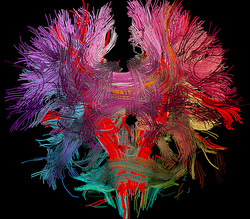 Radu Jianu/Brown University Radu Jianu/Brown University Manomayakosha ( the mind sheath) is the control center for the emotional and physical body. The manomayakosha contains our thoughts, feelings, fantasies, and daydreams. A healthy manomayakosha allows us to maintain balance and handle life’s ups and downs and has a crucial role in our experiences of happiness, joy, pain and suffering and ultimately our health. We get bombarded day in and day out with stimuli that can build up in the manas ( the mind). In a yoga class we practice Pratyahara , the withdrawal of the senses, an important step in order to be able to concentrate for meditation . If we are not in a yoga class, we can do this by shutting of electronic devices: t.v., staying off social media and taking some time out . Those emails can wait. Keep a clean work and home environment and avoid drama queens & emotional vampires! The manomayakosha also holds our collective subconscious records, the samskaras which intimately influence our actions. It is like an iceberg where all the experiences , both karmic and those that you have ever had in this lifetime are stored away in your subconscious mind with most of it hidden below the surface of your conscious awareness. Our life challenges can remain buried and unresolved for years and may rear their head as anxiety, anger, addiction, compulsive behavior etc. Yoga Nidra, can be very powerful healing tool tapping into the subconscious and exposing suppressed emotions. On a day to day basis we can decide whether to remain shackled to our old samskaras or we can rewire the brain, by planting seeds of change and forming new samskaras:
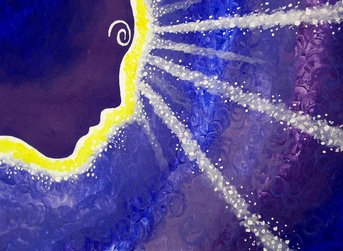 Vijanamayakosha—Vijnana means knowing. It is the kosha of discernement and insight, instinct and intuition. It is the gateway between the individual mind and cosmic mind. Spiritual nutrition as in writing, learning and sharing of ideas and deep truths is what feeds this sheath. Also spending time in nature and aligning our routines with the cycles of nature. When we have a strong vijanamaya kosha ,we choose to move past emotion, to act with intention and non-attachment, free from ego and we can begin to experience wisdom and life at a deep intuitive level . We can tap into this sheath at any time .How many times have you doubted your intuition and shrugged it off? It is the manas getting in the way! That deep sense of intuition and awareness can only be developed if we listen to it and lift off the veil of the manas. One of the best fuels for the Vijanamaya kosha is good asana practice, followed by pranayama practice , balancing the ida and pingala and awakening the sushumna channel for meditation. Anandamaya kosha is the bliss sheath. It happens when the body and its sensations, the pranamayakosha dissolves, the mind and the wisdom layers dissolve and we are one with bliss. Deep sleep is an example of this. It is a little difficult to describe but when it happens you will know. It is an outer body experience. We experience it in fleeting moments when we feel that joy in nature, where we have no thoughts, just pure joy. In meditation we can experience pure bliss , but we don’t have to sit in meditation to arrive at this state of bliss. Trance dance, chakra dance and playing music, we dissolve into the music, the dance and then beyond. And this is the goal of Yoga : " ". My teachers, Joseph and Lilian Le Page, the founders of Integrative Yoga Therapy recently came back from India where they are doing research on the origins of therapeutic yoga and where it's going. Enjoy these educational videos!
The goal of Ayurveda is to bring us back to who we truly are and to restore balance. According to Ayurveda, the root cause of any disease is always the imbalance of tridoshas, or body humors. This further manifests as imbalance in other body components inevitably leading to disease.
Take the free Dosha quiz and find out what your unique constitution is and once you know your constitution, learn about the characteristics of your dosha and how to keep it in balance or bring it back into balance. Click here |
Archives
October 2015
Categories
All
|


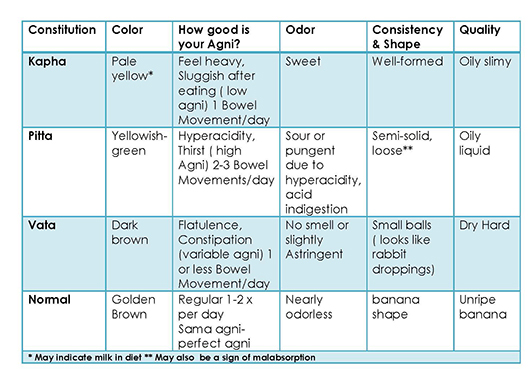

 RSS Feed
RSS Feed
